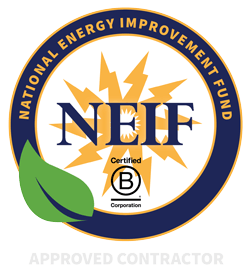20 Easy Steps for Heating Maintenance This Winter
- Heating

Cooler weather is upon us, so it’s the perfect time to focus on heating maintenance. It’s easy to forget about that when your system is up and running, but you should think ahead to what might happen if it fails down the road.
Obviously, losing the heat in your house in the middle of winter is inconvenient at best and dangerous at worst. Even if you can get it fixed, you’re still at home shivering or at the local motel until the repair service eventually makes it through their list to your place. (There are likely many others in the same boat as you when heating systems start up in the fall!)
Even if there isn’t a full heating system failure on the horizon, you are likely to be wasting money or suffering from poor heating performance if it hasn’t been checked recently. You could even be facing health and safety issues, with poor air quality or carbon monoxide poisoning. If that isn’t enough motivation, at least think of the peace of mind that comes with knowing that your heating system is fully functional and ready for the winter.
Here are the specific benefits of a heating system tune-up:
- Improved energy efficiency
- More uniform heat flow
- Reduced cost (preventive maintenance is much less expensive than emergency repairs!)
- Longer heating system lifetime
- Comprehensive evaluation of one of the most valuable systems in your home
- Safety – protection against carbon monoxide and contaminants!
So, here are 21 steps that a professional heating system tune-up will provide, to get you that peace of mind … not mention performance, efficiency, savings, and safety:
It all starts with inspections!
- Inspect the burner: The burner needs to be free of contamination and structurally sound to make sure that it works as designed.
- Inspect the combustion chamber: Similarly, any contamination or irregularities in the combustion chamber can prevent proper heating and even create a hazard if the combustion chamber isn’t in working order.
- Inspect heat exchangers: Consistent heating requires the heat exchangers to be working properly, since this is the heart of the system. The transfer of heat from where it is generated to the medium that distributes through the house is obviously critical for efficiency.
- Inspect the flue: The flue is critical since proper venting is needed for efficient functioning. If a duct or pipe is blocked – even partially – contaminants can build up or the products of combustion can accumulate inside the system.
- Inspect belts for cracks: Any belt requires some flexibility and is therefore subject to cracking eventually. Cracks might not be immediately visible, so a thorough inspection by a professional is needed.
- Inspect belts for tension and alignment: Belts can move out of alignment or loosen as they age, so this is another important target for a professional inspection. If these problems aren’t fixed, the belt lifetime is likely to be diminished.
- Check gas line for leaks: A leak in the gas line is clearly a major problem! A heating system professional will have the experience and equipment to detect even the smallest leak, which could save your system (and more!) from a catastrophic failure.
- Check safety controls: Obviously safety is the main concern in a heating system, so the safety controls should be checked regularly.
A series of adjustments will come next:
- Adjust fan control: This adjustment will allow for better airflow, thus increasing the efficiency of the system and create heating that’s even.
- Calibrate thermostats: Thermostats often need to be adjusted to trigger at exactly the right temperatures, to heat your house as intended when you set the thermostats.
- Adjust the pilot light: It is important for the pilot to be functioning right for proper turn-on of the system.
- Tighten electrical connections: Electrical connections can loosen over time, especially in any large electromechanical structure like a heating system, so tightening all of the connections periodically prevents one common source of problems.
Finally, some routine heating maintenance and testing finishes the job:
- Lubricate moving parts: This ensures smooth and efficient operation.
- Replace thermocouple: A thermocouple measures the temperature in the system and is a common source of early failure, so the thermocouple should be checked and replaced if needed.
- Clean air filters: Cleaning improves air quality. The filters should be replaced periodically too.
- Clean blower components: Air quality and efficiency are better, of course, when the part of the system responsible for moving the air is kept clean.
- Test combustion air openings: Air next to get to the combustion area for proper combustion, so this is another spot where imperfect air flow affects system performance.
- Test manifold gas pressures: The manifold is where gas flows from the source to the main burners, so checking the pressure there will identify any gas flow issues.
- Check noise and vibration levels: Any excess noise or vibration is likely to indicate some problems in the system that need to be identified and addressed.
- Clean the interior of the vestibule: The vestibule creates an airlock between the inner furnace components and the outer door, so this must be kept clean to prevent contamination and inefficiency.
- Conduct operational test: Finally, a full operational test will make sure that steps 1 through 20 were done properly. A heating system professional won’t assume that every step was done perfectly. Too much is at stake!
For More Information on All Things Heating Maintenance, Call NSHEC Today!
Contact North Shore Home Energy Today for the Best in Heating Maintenance!
Check Out Our Current Specials!
Read The Great Things That Your Neighbors Are Saying About NSHEC.





